Let’s be honest. If you’re a homeowner in the UK, you’ve probably dreamed of finding more space without the gut-wrenching cost and hassle of moving. For a growing number of families, the solution isn’t found in a sprawling new build, but right above their heads, hidden behind a layer of insulation and the occasional forgotten holiday suitcase. What will it really cost you?
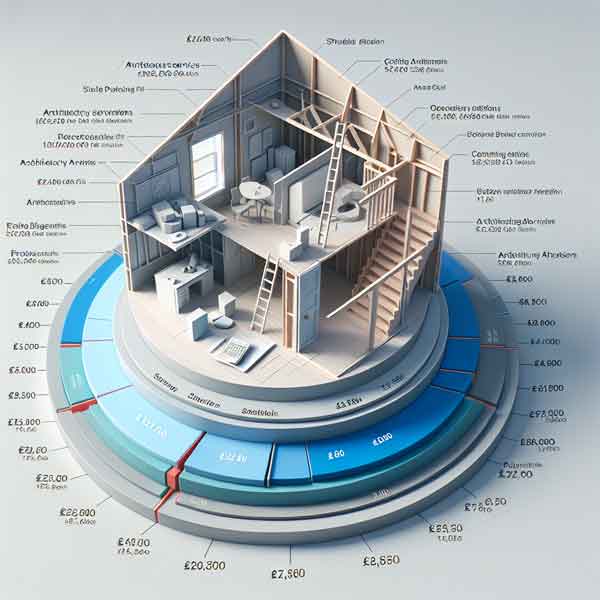
A loft conversion isn’t just another renovation project; it’s a strategic move to reinvent your home and its value. But let’s cut to the chase: what is the real financial commitment, the real cost 2025? Lets look beyond the dust sheets.
This guide cuts through the noise to give you a clear, realistic picture of the costs you can expect in 2025, from the type of build you choose to the surprising impact of your postcode.
It’s More Than Just a Quote: What Shapes the Final Bill
A trustworthy builder won’t throw out a random number. Their loft conversion quote is a blueprint of your specific project’s needs. To understand it, you need to speak the language. Here are the core elements that will shape your investment:
- The Blueprint: This is the big one. A simple skylight conversion is a world away from a complex structural change like a Mansard. The design dictates the price.
- Your Home’s Bones: The existing structure is everything. What’s the current head height? Is the roof built with trusses or traditional rafters? The answers here can significantly sway your budget.
- The Finishing Touches: Are you dreaming of a luxurious master suite with en-suite and built-in storage, or a functional playroom? The choice between standard and premium finishes is a major lever on the final cost.
- The Unseen Essentials: This is where many budgets get a surprise. Necessary structural work like steel beams, new floor joists, and upgraded party walls are non-negotiable for safety but must be accounted for.
- The Paperwork: Don’t forget the admin. While many projects fall under Permitted Development, some need full Planning Permission. Every single conversion must meet Building Regulations. Factor in fees for applications, structural calculations, and potentially, a Party Wall Award.
Breaking Down the Build: A Cost Guide for Every Conversion Type
Your choice of conversion is the primary architect of your budget. Here’s what each option typically entails for a standard three-bedroom home.
The Roof Light Conversion (The Simple & Elegant Solution)
This is the most straightforward approach. It works with your existing roof structure, fitting high-performance windows into the slope and outfitting the interior. It’s minimal fuss but requires good existing head height.
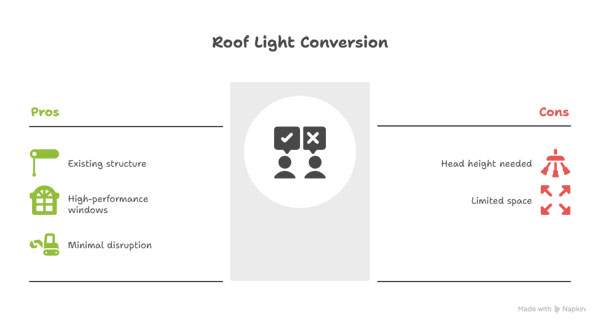
- The Investment: £25,000 – £45,000
- Perfect For: Those with a spacious loft area already and a desire for a bright, airy room without major construction.
The Dormer Conversion (The Space-Maximising Crowd-Pleaser)
The UK’s favourite for a reason. This involves building a box-shaped extension outward from the roof, creating bags of full-height space and practical square footage. It offers the best balance of added space and cost.
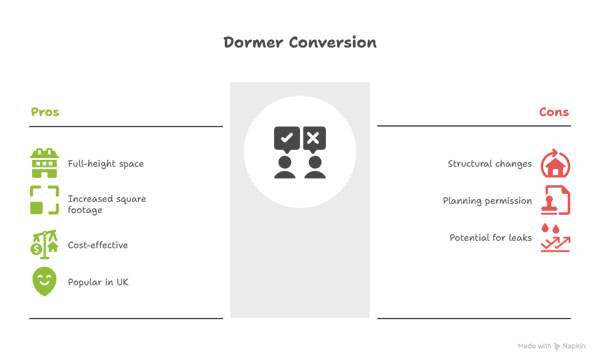
- The Investment: £40,000 – £75,000
- Perfect For: Most terraced and semi-detached homes where maximising every inch of available space is the ultimate goal.
The Hip-to-Gable Conversion (The Space Creator)
Ideal for certain property types, this clever technique effectively squares off the roof, unlocking a dramatic increase in valuable, usable floor space.
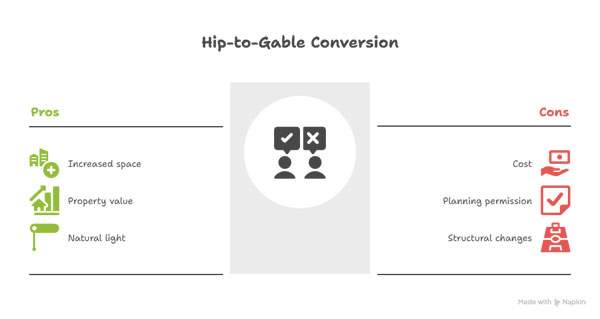
- The Investment: £45,000 – £80,000
- Perfect For: End-of-terrace houses, bungalows, or detached properties with a hipped roof structure.
The Mansard Conversion (The Maximum Impact Project)
This is the most complex and structural option, typically constructing a new, near-vertical roof with a flat top. It offers the greatest amount of new, usable space and is a common sight in urban landscapes, but often requires planning permission.
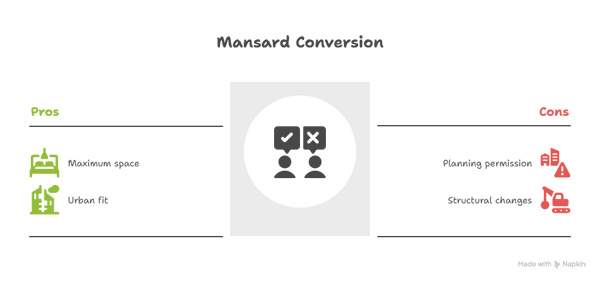
- The Investment: £55,000 – £100,000+
- Perfect For: Homeowners in cities or those who need to maximise every possible centimetre, accepting a higher budget for a transformative result.
The Postcode Premium: How Your Address Impacts the Price
Where you live in the UK isn’t just about scenery; it’s a significant line item in your quote. Labour and material costs vary wildly across the country.
- The North of England (e.g., North East, Yorkshire): Often presents the most competitive pricing, frequently aligning with or dipping below the national average.
- The Midlands and Wales: A good barometer for the UK average. Costs here typically represent the middle ground.
- The South West and South East (excluding London): Prepare for a premium. Costs here can be 10-15% higher due to increased operational and labour expenses.
- London: The capital commands its own economy. Prices here are routinely 20-30% above national averages, driven by higher wages, complex logistics, stringent borough-specific regulations, and the frequent need for Party Wall agreements.
The Hidden Line Items: Don’t Forget These Costs
A savvy budget plans for more than just the builder’s invoice. The true cost of your project includes:
- Professional Fees: Architectural drawings, structural engineer reports, and party wall surveyors can add £2,000 – £5,000 to your upfront costs, these can be as high as a house extension.
- Authority Fees: Building Control approval and any necessary Planning Permission applications will involve fees to your local council, typically totalling £1,000 – £2,500.
- The VAT Elephant: Always confirm if your quote is inclusive or exclusive of VAT. Adding 20% to a large sum is a substantial consideration.
- Your Contingency Fund: You must safeguard 10-15% of your total budget as a contingency for unforeseen issues. This is your financial safety net for any surprises hidden behind the plaster.
An Investment in Your Lifestyle and Equity
While the initial outlay is significant, it’s viewed through the lens of investment. A high-quality loft conversion is renowned as one of the single best ways to add value to a UK property, potentially increasing its market price by up to 20-25%. In many cases, the cost of the project can be largely recouped when you eventually sell, meaning you’ve effectively paid for years of enhanced living with little net loss.
The key to a successful project is knowledge. Use this guide as your foundation, then get detailed, itemised quotes from at least three reputable, specialist loft conversion companies. Look for those registered with TrustMark or the FMB for peace of mind. With a realistic budget and the right team, you can unlock your home’s potential and create a space that pays for itself in both comfort and value.

Recent Comments